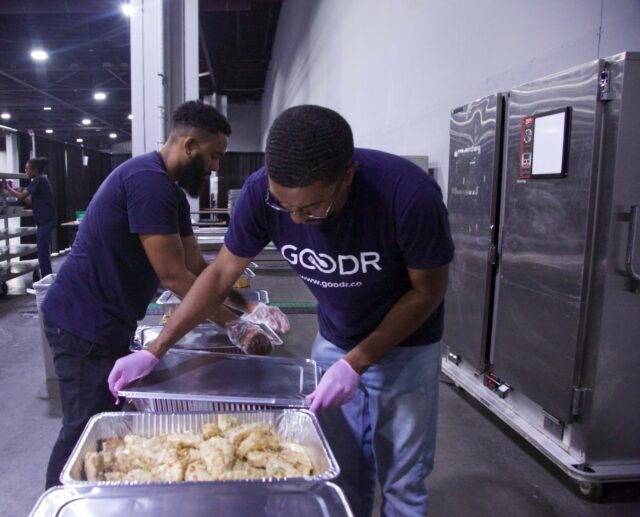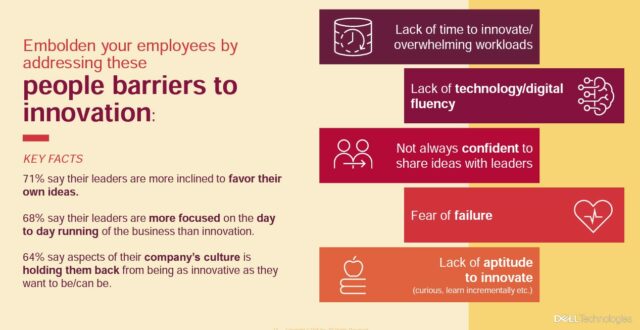By Erik Day, senior vice president of global small business, Dell Technologies

Six months ago, generative AI wasn’t dominating news cycles. Now the technology is on track to change the way we do almost everything in the world. It’s a reminder of tech’s power to drive innovation and reward those who think big. According to the Dell Innovation Index, six in 10 organizational leaders worry that, based on their innovation culture and/or pipeline, their organization won’t be relevant in the next three to five years.
To build an innovation culture with staying power, the most successful business leaders remove barriers to success, stay open to different perspectives and give people space to be their authentic selves.
Given today’s environment, it’s even more important to foster an innovation culture and build innovation resilience so your organization can gain a competitive advantage. Here are four observations on how to innovate during a recession.
Innovation can effect change during tough times

When the economy gets tough, innovators double down. As you try to create new paths to success for your business, you need to lean in when opportunities to innovate come up. Innovation leaders and adopters are 2.2 times more likely to accelerate during economic uncertainty, allowing them to emerge stronger and more competitive, the Innovation Index found.
At the start of the COVID pandemic, our team at Dell worked with Atlanta entrepreneur Jasmine Crowe, who realized that an enormous amount of food was going to waste because of widespread restaurant shutdowns. As the founder of a startup called Goodr (tagline: “Feed more, waste less”), Crowe worked with restaurants, grocery stores and food businesses to divert unwanted food to organizations that feed the hungry.
Already a Dell customer, Crowe leveraged our team’s support to ramp up her efforts to feed underrepresented communities that were heavily impacted by the pandemic. Goodr now partners with major food service companies like Compass, Aramark and Sodexo, hotel chains like IHG, and other food industry clients in more than 30 U.S. cities to help manage and process their food waste. By sharing stories like Crowe’s, we can remind people to remain open to innovation, no matter the circumstances.
Transparency is key to building an innovation culture

Have you taken the necessary steps to ensure your team feels connected to your organization’s big picture? When I meet with Dell teams around the globe for brown bag lunches, my role is not to bring a top-down message but to inspire them to innovate to help meet the company’s objectives. According to the Dell Innovation Index, leaders and adapters are 1.7 times less likely to face a skilled IT labor shortage, and 1.2 times more likely to create new customer value through innovation.
As leaders, we need to help team members at every level understand how their contributions can foster a broader innovation culture and support their personal goals—such as completing higher education or other growth milestones, taking care of their families and planning for retirement. Doing so helps further build a sense of a shared mission that ultimately can unleash a ton of creativity.
If your goal is to serve all communities, you need to have a range of voices and diversity of thought around the table challenging yours. Otherwise, you’re going to be much less likely to attract an audience that’s diverse and inclusive—and open to innovation. – Erik Day, SVP of global small business, Dell Technologies
Diversity helps drive innovation and engagement

We’ve learned at Dell that diversity of people equates to diversity of thought. People who grow up in different cultures and backgrounds bring different perspectives to problem-solving.
As the executive sponsor of the Pride global employee resource group (ERG), I have personally witnessed the business benefits of creating a culture where people can bring their authentic selves to work. Dell is ranked by Human Rights Campaign as a “Best Place to Work for LGBTQ+ Equality” and has built diversity and inclusion into its Environmental, Social and Governance 2030 Goals. In the coming years, Dell is aiming to have an increased percentage of global leaders who identify as women and are people of color.
We encourage leaders to think about the range of customers they want to reach with their products or services. If your goal is to serve all communities, you need to have a range of voices and diversity of thought around the table challenging yours. Otherwise, you’re going to be much less likely to attract an audience that’s diverse and inclusive—and open to innovation.
Innovation thrives in simplicity
Often, complicated processes and rules of engagement can stifle innovation. Our job as leaders is to remove those obstacles, to make things clear and to ensure that people can get from A to B in their own way, so that they can flex their creativity to reach the goal. Sometimes, that can be as simple as re-focusing on your mission.
When we put so much extra stuff in the system that the system gets clogged, the innovation stops. There are myriad reasons we might do that, but the result is the same—neither the business nor the individuals will benefit. So, we have to keep reminding people of the simplicity of what we’re doing.
If you motivate and innovate through your people, your people will take care of your customers, your customers will continue to buy from you, and ultimately, your revenue will grow. It’s that simple—whether in good times or challenging ones—and innovation will always get you there.

